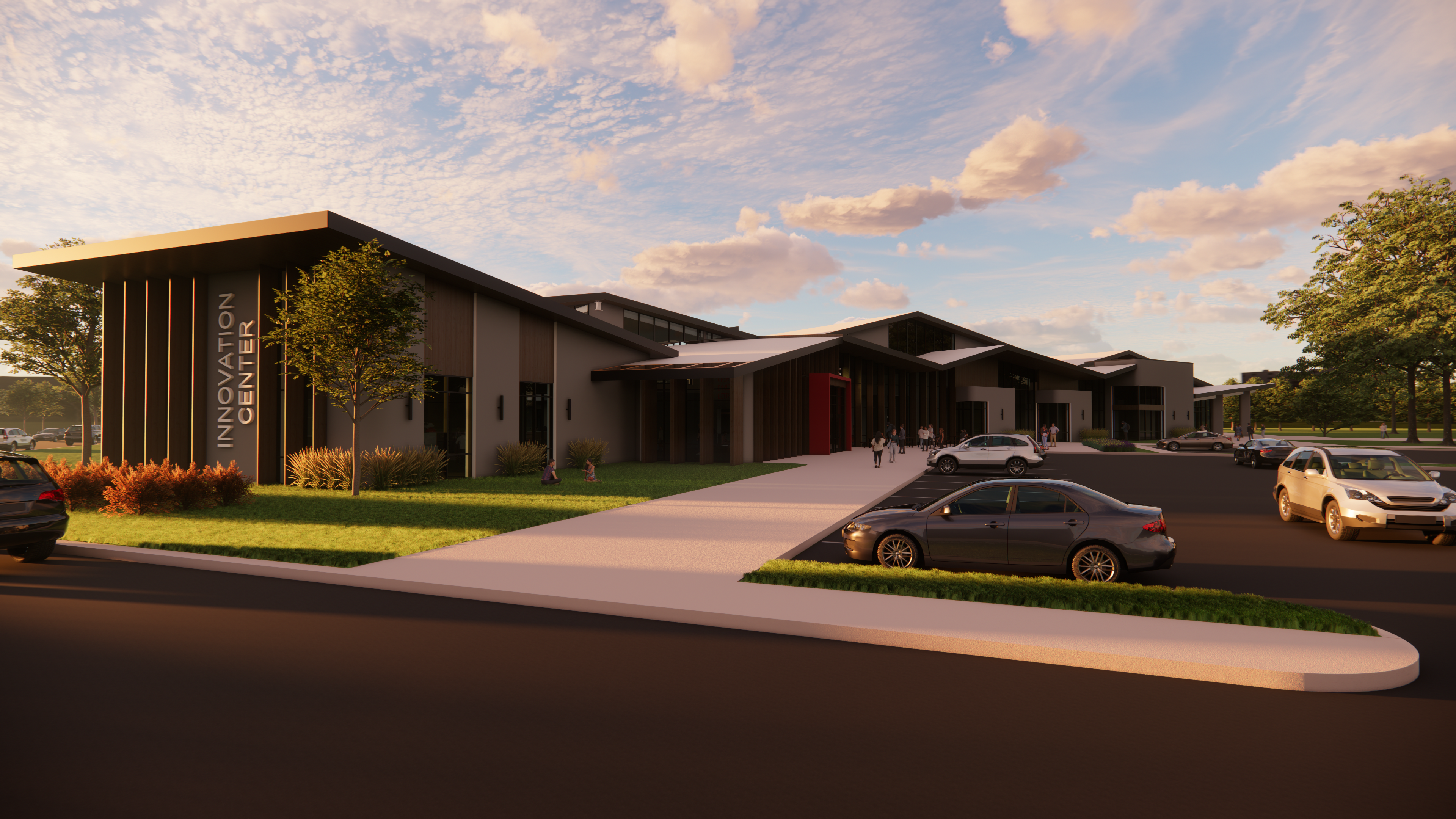Learning spaces in the 21st century must foster discovery, innovation, and collaboration. As we progress towards learner-focused environments, the priority of education expands beyond finding information but applying that information in real-world applications to deepen and strengthen learning. We are designing spaces that meet the diverse needs of students, communities, and economies by developing exceptional and contemporary innovation and incubation labs and program spaces on college campuses.
Designing educational spaces is an ever shifting and advancing landscape, and we strive to be at the forefront of providing expertise and design excellence to our clients.
What are innovation labs?
Innovation labs are collaborative, physical spaces developed in response to the need to re-evaluate the design of traditional classrooms and better understand how the design of learning spaces can impact learners. We know that learning is not confined to predetermined classroom space and time, but is a more flexible, social, and integrated endeavor providing a highly collaborative environment.
Innovation labs are collaborative, physical spaces developed in response to the need to re-evaluate the design of traditional classrooms and better understand how design of learning spaces can impact learners. We know that learning is not confined to predetermined classroom space and time, but is a more flexible, social, and integrated endeavor providing a highly collaborative environment.
College programs that invest in program innovation specific spaces benefit by allowing for deeper levels of engagement for the inhabitants of the building as they relate to collaboration and creative thinking. We design these spaces to provide our education clients with transformative spaces for their students, staff, and community to be able to creatively problem solve real-world situations.

Our innovation labs prioritize the ‘Open Lab’ concept. Where college programs partner with real-world industries and services occupy a shared space.
Open Lab Concept
The open lab concept was designed in response to emerging learner and learner environment needs. It is a partnership between college programs and real-world industries and services that occupy a joined space. These dynamic environments serve both student populations and various agencies with diverse expertise and facilitate ideation, prototyping, and test innovation solutions in a collaborative setting.
At its core, an innovation lab is a strategic initiative that is intended to break down traditional silos that can occur between different college programs and the professional world. The purpose is to enable the free flow of ideas, creating a multi-disciplinary, dynamic knowledge exchange.
Example A, when designing these spaces, we used an “Inside/Outside” approach to spatial relationships. This plan places major innovation/incubation spaces along the center with circulation of individuals and groups occurring along the perimeter. The design provides an interior street to be bathed in sunlight with smaller breakout, collaboration flow zones and rejuvenation zones located on the exterior where users can commune with nature.

Example B, another option flips the program spaces by placing a majority of the flexible/ collaboration spaces, and innovation/incubation open labs on the exterior while allowing for an interior street along the center of the space. This allows for interactive innovation for small, medium, and large groups to be focused in the middle of the lab space and activation zones are along the street. Larger groups are able to engage where designed walls are able to flex inward and outward providing direct access to the outdoors and other learning spaces.

While using these layouts and strategies we’ve successfully created innovation and collaboration spaces that provide a knowledge exchange among peer groups, educators, industry leaders, and community members and the ability to cross pollinate ideas. These spaces and the ability for people’s interaction play a crucial role in promoting new ideologies, learning, and communication, which drive economic growth, a strong entrepreneurial environment, and lifelong learning.
We’ve successfully created innovation and collaboration spaces that provide a knowledge exchange among peer groups, educators, industry leaders, and community members and the ability to cross pollinate ideas.
How Do These Spaces Work?
Unlike conventional educational models that consisted of teachers “broadcasting” regular scheduled content to a room of students or “receivers”, our developed innovation labs prioritize active participation, building, interactivity, and social engagement. Research shows that social interaction such as debate, discussion, and teamwork encourages learning. These activities are translated into guiding design principles that ensure our designs serve a clear educational purpose. For example, our innovative spaces feature highly flexible physical and technology spaces, modular layouts including moveable wall systems with lightweight, wheeled, and adaptable furniture/learning equipment that can easily be reconfigured to accommodate different project requirements and team dynamics. This design concept purposefully provides an adaptive and dynamic work environment conducive to creativity, innovation, and deeper learning.

We design innovation zones that include state-of-the-art technology, tools for prototyping such as 3D printers, virtual reality systems, idea walls, flow pods, flexible program spaces for small, medium, and large collaboration zones that we refer to as “me, we, and us” zones.
We’ve designed these spaces to be visually stimulating, inspiring creativity and promote out-of-the box thinking. This approach is successful by utilizing separate to group interaction zones, break out spaces, colorful rejuvenation zones containing comfortable furniture, and large amounts of daylighting throughout the building.
We’ve designed these spaces to be visually stimulating, inspiring creativity and promote out-of-the box thinking. This approach is successful by utilizing separate to group interaction zones, break out spaces, colorful rejuvenation zones containing comfortable furniture, and large amounts of daylighting throughout the building. This allows for the inhabitants of the building to energize when desired or decompress as needed. Additionally, we provide dedicated areas for brainstorming sessions, informal discussions, and quiet zones for focused work.
The innovation centers prioritize integrated services to aid in learning. We implement a more focused approach by integrating the presence of educators, mentors, and local industry teams through the innovation, learning, and idea generation process. Common areas can be seen with both individual, group work, and collocated faculty offices, which encourages more direct work with students.
Why are these spaces essential?
A major trend informing current learning space design is active and social learning strategies. Facilities that encourage learner participation are increasingly important in learning space design. Active learning, interaction, and social engagement will be critical aspects of the educational space in the future.
Research dedicated to how people learn explains that learning can be enhanced, deepened, and made more meaningful if the curriculum makes learners active participants through interactivity, multiple roles (such as listener, critic, mentor, presenter), and social engagement.
Social interactions such as debate, discussion, and teamwork, for example, encourage learning prompting the design of a space to accommodate those activities. We deploy strategic design decisions when developing innovation labs to meet these criteria to promote social interaction, active learning, and participation.

Another area of innovation is based in the material sections within the building. The development of this building began with interactions with the primary stakeholder in the building. We worked with a 3D concrete printing company occupying a portion of the building to utilize their product for the shell of the structure. Additionally, we purposefully utilized a highly sustainable structural system of cross-laminated timbers (CLT) for structural ceiling and roof systems.
At VFLA, we take a contemporary and strategic approach to designing Innovation Centers – a building that brings together industry thought leaders and partners along with the community and student populations to provide crucial program space for the development of the “new idea”.
Six Essential Components of a Successful Innovation Center
- Various sized flex spaces to allow for small, medium, and large groups to discuss, test, debate, problem-solve, listen or present, and many more ways students and community engage.
- Spaces that allow for idea development, learning, relaxation and rejuvenation, break out zones with moveable furniture and walls for maximum flexibility.
- Integration of technology that supports a contemporary technology infrastructure. A focus on software implementation and interoperability.
- Providing “thought walls” – A low tech, moveable wall for impromptu discussion that allows for engagement in different ways and locations in effort to spark ideas.
- Infuse the space with hospitality/rejuvenation zones – Both internal and external spaces. Proper food and beverages are at the core of providing fuel to the body and brain. Additionally, these provide opportunities for conversation and engagement within different groups.
- Storytelling – the building and spaces that reside within the building should reflect the brand, its mission, and the values. Thought must be given to the information provided as an opportunity to inspire and inform those who occupy the space.
Conclusion
At VFLA, we take a contemporary and strategic approach to designing Innovation Centers – a building that brings together industry thought leaders and partners along with the community and student populations to provide crucial program space for the development of the “new idea”.
The design and development of innovation, ideation, and incubation buildings as well as associated program spaces must allow for organizations and their respective ideas the space to thrive and grow. To do this, exceptional and well thought out spaces are required for inhabitants to explore, collaborate, and experiment. The idea of an innovation center must include dynamic workspaces to allow each individual among groups the opportunity for intellectual “collisions”. A space where individual thoughts and diverse talent are able to test an idea, share results, and collaborate in a multidisciplinary discovery space.



